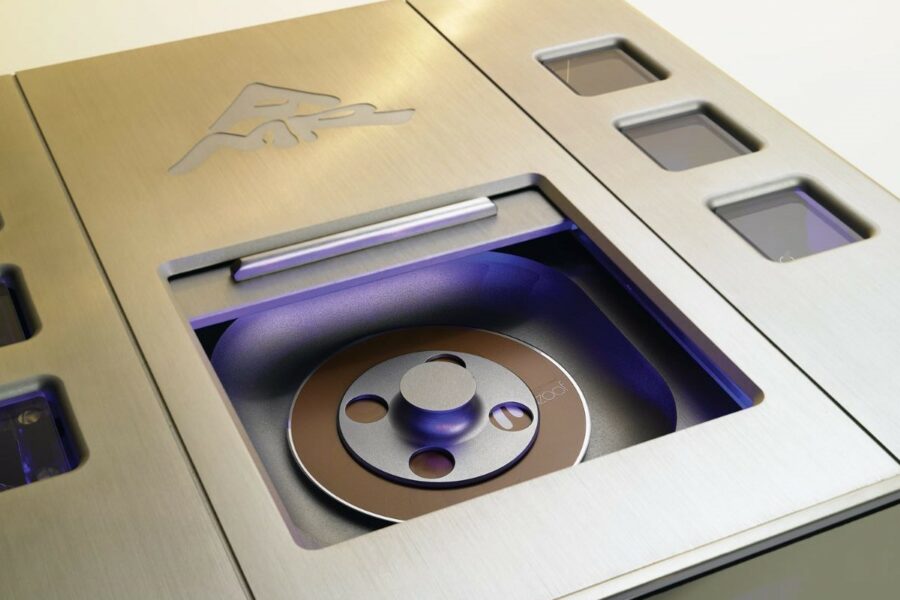Only live fish swim upstream. Remembered that when, around 10 years ago, I reviewed, side by side, two major top-end CD Players, Wadia 381i from USA, and AMR CD-77 from the UK. Both were genuine CD Players, i.e. they didn’t read anything else than CDs. If they optionally accepted digital data via an extra bus, they outputted it on the CD-level and nothing more.
At the time of the launch, it could already be foreseen that in the near future downloading and streaming music would be the most common way to appreciate music. Maybe Wadia and AMR just counted that it would not happen in next five years or so, and that Compact Discs would still be relevant for their new CD Players for some time. Introducing new technology is never straight-forward business. Most tech forecasts are too optimistic. Secondly, CDs would continue to be relevant to those audiophiles who have no intention ever to give up their beloved, often large CD collections, and for whom CD playback will always represent the best one can expect from artificial sound reproduction, regardless of where the technology is heading.
No matter, sticking to CD playback in the wake of high-resolution streaming frenzy was, I think, a bold move. No less radical was Wadia’s and AMR’s decision to build their new CD Players around multi-bit vintage DAC chips; Brown 1704K in the Wadia’s case, and Philips TDA 1541A in AMR’s. Why on earth? Well, one reason could be that some of the first generation CD Players, and DACs, without oversampling, digital filtering etc. etc. simply managed to sound surprisingly good. On the other hand, the relative merits of various DAC chips has always been a widely and intensely debated subject since the introduction of the very first CD Players. In the early years of CD playback, the fight for superiority took place between Burr Brown or Analog Devices, the newest heroes in this narrative being ESS and Wolfson.
Anachronistic DAC chips?
Both Brown 1704K and Philips TDA 1541A were outdated already at the time of the two new CD Players. As we know now, they were later largely replaced by single-bit Sigma/Delta chips. Simply put, parallel multibit converters differ from Sigma/Delta types in that in the latter each bit of the sample is converted back to analog form for amplification instead of all bits being converted in parallel. // The parallel type utilizes separate resistor cascades and switches for each dynamic modulation of the audio signal. ? whereas ?? Sigma/Delta-type standard comparators in DACs define changes in the dynamic range of the audio signal.
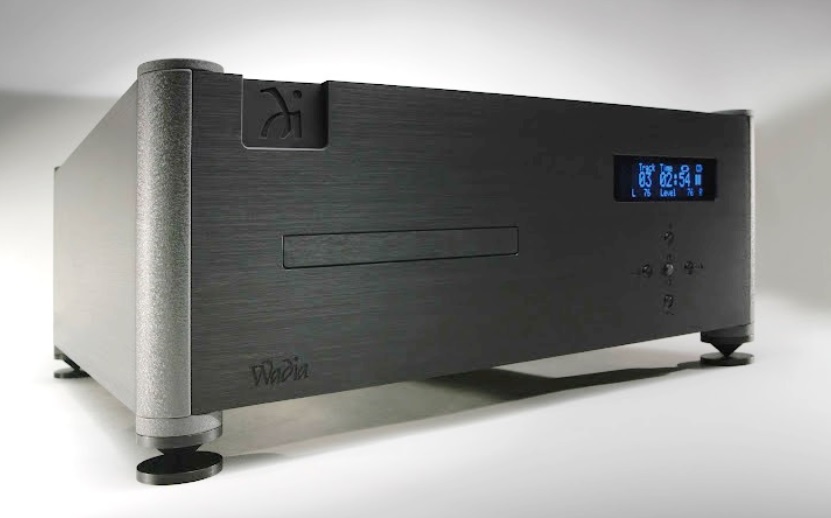
The Burr Brown 1704K of Wadia 381 is a technically strong, 20-bit precision DAC chip, following the legendary Burr Brown PCM63P-K. Accuphase, Apogee, Audio Note and TEAC Esoteric, among others, had made used of it. Together with a digital interpolation filter, the PCM1704 supports 8x oversampling at 96kHz resolution. People especially appreciated the 1740K’s good dynamic performance, low distortion level and, to many, ear-pleasing distribution of distortion components and performance at low signal levels. Of different versions, K was considered the best.
Philips’ Monolithic Dual 16-Bit D/A Converter TDA 1541A, the king of multi-bit DAC chips, is a direct descendant of the world’s first DAC chip, TDA 1540. Philips manufactured the TDA 1541A from the mid-1980s to the mid-1990s. The chip was found in many, at the time famous CD players such as the Marantz CD-12, but also in a number of less expensive CD players. According to the Data Sheet: “The TDA1541A accepts input sample formats in time multiplexed mode or simultaneous mode up to 16-bit word length. The most significant bit (MSB) must always be the first bit. The flexible input data format allows easy interfacing with signal processing chips such as interpolation filters, error correction circuits, pulse code modulation adaptors and audio signal processors (ASP). High maximum input bit-rate and fast setting enables application in 8x´ oversampling systems (44.1 kHz to 352.8 kHz or 48 kHz to 384 kHz) with the associated simple analog filtering function (low order, linear phase filter). True 16-bit performance is achieved by using, in both channels, three 2-bit active dividers, operating on the dynamic element matching principle, together with 10-bit passive current divider, based on emitter scaling. All digital inputs are TTL-compatible.” Of the two versions of the TDA 1541A, the Double Crown version is more linear in the measurements. From somewhere AMR had managed to find a batch of TDA1541A Double Crowns for the CD77 project.
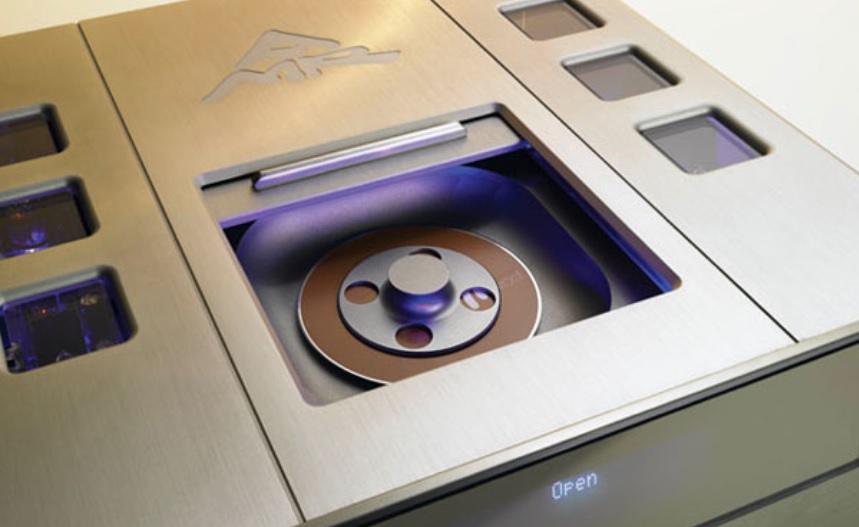
Around the chip
Naturally, there’s more to DA conversion than the chip itself. Apparently, a major reason why Wadia and AMR ended up using a vintage DAC chip is that such chips lack all kinds of non-modifiable technology such as multiple channels, volume control, upsampling, own clock oscillator, etc., all of which can be found in many modern IC chips. Cheaper IC DAC chips would have been available, but both the Burr Brown 1704K, and the Philips TDA1541A, are from an era when the physical quality of the chip was under the main focus, and no compromises were made, for example, related to the size of the Silicon die. Since the two chips are pure CD chips, Wadia and AMR didn’t have to settle for additional features that often require compromises such as digital and analogue filtering. Instead, they designed and built their own digital and analog filters, and other rather unique technology, before and after the selected DAC chip with the aim of reducing noise and preventing jitter. The fact that many of the parts are external to the DAC chip itself and accessible externally, enable, in principle at least, the designer to maximize each and every facet of the DAC for the best sonic performance.
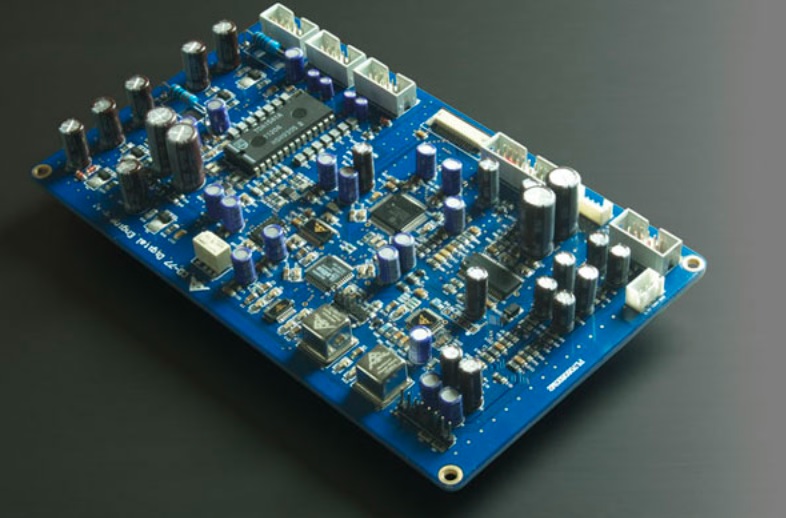
Apart from the DAC
The technology of a CD player is not only limited to DA conversion, of course. An inaccurate clock, unstable power supply, mediocre analog output, etc. can easily ruin pretty much anything achieved with a well-implemented DA conversion. Both players seek, in their own ways, to resolve these hot issues of CD playback. For instance, the Wadia 381i sports a sophisticated digital gain control system and its efficient linking to the power stage, an efficient power supply, a new transport mechanism and a heavy chassis. The AMR CD-77 feature the manufacturer’s own transport mechanism and servo electronics, a complete tubed output stage, individual power supply for different parts, sturdy encapsulation of parts etc. Let’s see in more detail.
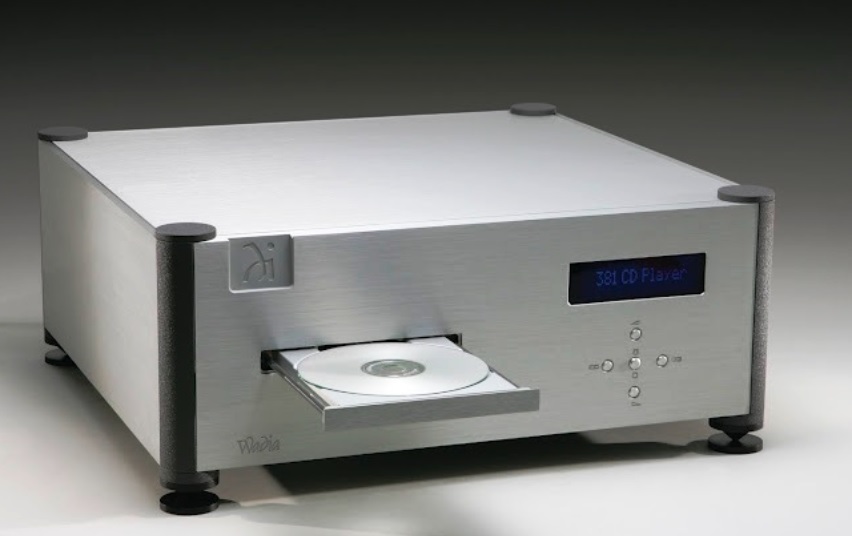
The sheer presence of 26 kg Wadia 381i exudes technical confidence, and breaths bunker-like solidity. Its simple, rugged style, and careful finishing and quality manufacturing speak of technical effort on the part of the manufacturer. The chassis is 15 mm anodized aluminum. The rounded corner moldings are also aluminum, albeit of different color. Under the body there are flat feet and cones that can be screwed into them, and washers to go under the spiked tips of the cones. The front plate features a logo, the disc tray, a small display and five tiny steel buttons. The rear panel shows the power switch, and two line inputs, unbalanced (RCA) and balanced (XLR). Both can be used simultaneously.
Some audiophiles choose their CD player on the basis of how the disc tray functions, and the sound it makes when sliding in and out – much like some people choose their car on the grounds how the doors close up and what kind of sound they make while doing so. In Wadia 381, the steering shafts run on the side of the plastic disc tray. The operation is not completely silent, nor is the movement utterly smooth, but very solid and precise still. The hollow for the disc is rather shallow. The disc should be properly placed on the bed so that the tray does not get stuck when closing.
As to the transport mechanism, Wadia’s traditional choice was Teac. The transport mechanism of the 381, however, comes from the Austrian transport specialist Stream Unlimited. The mechanism is suitable only for CDs. The new clamp mechanism resembles classic Philips transports from the 1990s. The sturdy housing of the mechanics guarantees mechanical and electrical isolation. The rotor part is matched with Wadia’s Cloclklink jitter removal technology: the clock signal is not read from the incoming data, but the master clock is in the DAC part, from where the clock signal is transferred to the rotor in synchronization with the DAC, with the aim of reducing the amount of jitter. Other technology around the DA converter is familiar from the former flagship model 581; such as Wadia’s DigiMaster 2.5 reconstruction filter, discrete I/V voltage conversion, zero feedback, electrically, mechanically and acoustically isolated mains transformers (digital and analog), company’s own filter coils for power supply capacitors.
In accordance with Wadia’s design philosophy, analog circuits are avoided eg. by means of digital volume control, which in the case of the 381 represents Wadia’s latest generation (level adjustment is realized digitally by mathematical manipulation of the 24-bit signal). The signal is directed directly to DAC chips, which Wadia says improves the resolution at low levels, and results in better distortion and noise values. Above a reading of 65, the player reproduces the full dynamics of the signal. During the listening, the volume level was typically between 90 and 100. A quality volume control is necessary when the player is connected directly to the power amplifier, the option that many Wadia owners prefer. It is possible to choose an output voltage between 0.3V-4.25V for power amplifier matching or for sensitivity matching in general (the jumpers are inside the chassis on the circuit board of the power stage). The power stage of the Wadia 381 is such that it can drive power amplifiers from a long distance.
The remote control has a solid feel, is stylish and pleasant to use, but the commands of the remote were implemented a little slowly. In addition to volume, channel balance, absolute phase (always in phase during listening), and digital filter algorithms can be adjusted. Following Wadia’s recommendations, I kept the 381 on all the time (stand-by power consumption is 58 watts). With a small additional investment, Wadia offered 381 equipped with a digital input and output (RCA / USB), making it Wadia 381i. This could be connected to another DAC, or used only as a DA converter.
AMR CD-77
The Abbingdon-based AMR CD-77 is likewise a massive CD player that hides loads of techniques rarely seen in a digital player. With the CD-77 AMR wanted to “recover much of the ground lost by compact disk to well-implemented vinyl front-end systems”. The key to CD-77’s sonic performance is OptiSignal conditioning circuit. OptiSignal refers to AMR’s R&D efforts to optimize every single operating parameter of the Philips TDA1541A including off/onboard circuits. For example, OptiSample digital engine offers six digital filters: Direct Master I removes all digital or analogue filtering/processing from the signal path, while Direct Master II features AMR’s own analogue filter (plus 4 other). And so on.
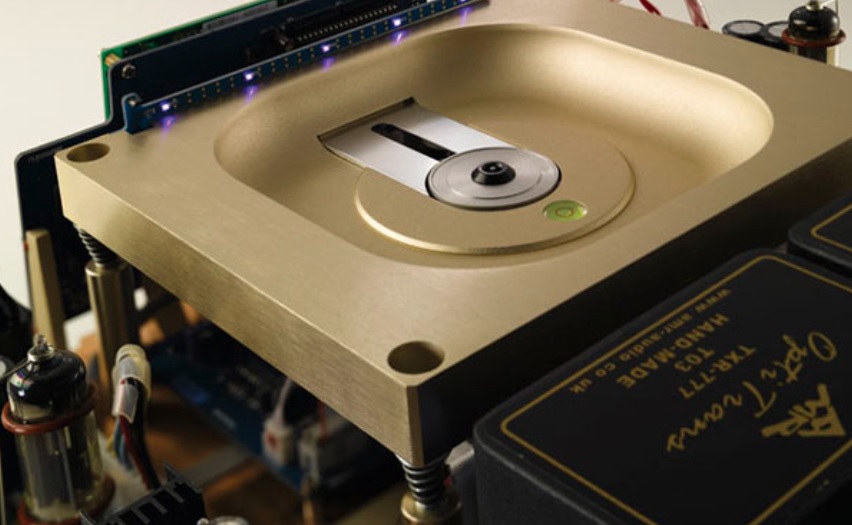
OptiClockLock ensures that all the clocks in the CD-77 are synchronized with a single temperature-compensated, low-jitter master clock module (offers minimal phase noise). OptiReg technology means that the digital department power supply has 14 different regulators designed and adapted for different purposes (series regulation, shunt regulation, etc.). OptiDrive transport mechanism points to the top-loading and physically floating transport mechanism, including the magnetic clamp system, Sony’s K-series transport mechanics, together with Mabuchi Japan’s high-torque direct-drive motor and a sturdy CNC-machined aluminum housing, and a Philips CD-18 servo system. OptiDrive also implies a memory buffer that is constantly filled with data and a phase-locking loop of the motor. Thanks to this the CD-77 was able to read CDs in a bad condition. OptiValve analogue output stage is not just a buffer tube after the OP amp (transistors), but instead a fully tubed analog stage with high-quality NOS tubes: ECC81 in amplification, 5687 as a buffer and EZ80 as a rectifier tube (visible through three small windows). There are up to five transformers for the tubes under the hood.
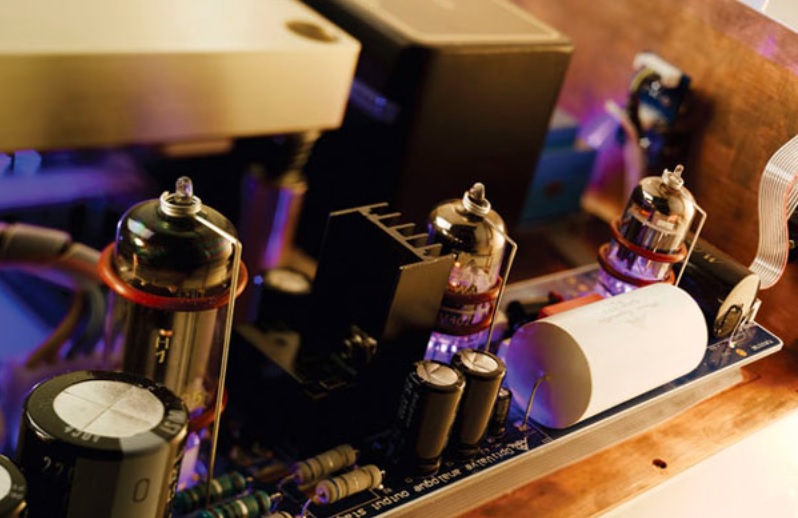
The output stage is a direct-coupled circuit without feedback. The parameters of the amplification circuit have been precisely matched with the requirements of the Philips TDA1541A DAC in order to achieve, among other things, low distortion level, low output impedance and high gain. The configuration is dual mono. The rear panel features AMR’s own RCA outputs, and an USB input for a computer. No digital output, however, because AMR relies on the sonic superiority of the CD-77’s advanced output stage.
Apart from those listed above, there is a half a dozen other OptiSignal techniques, all designed and realized by AMR itself. With this player AMR has basically addressed every technical issue related a CD Player, not relying on the know-how and components of various OEM suppliers.
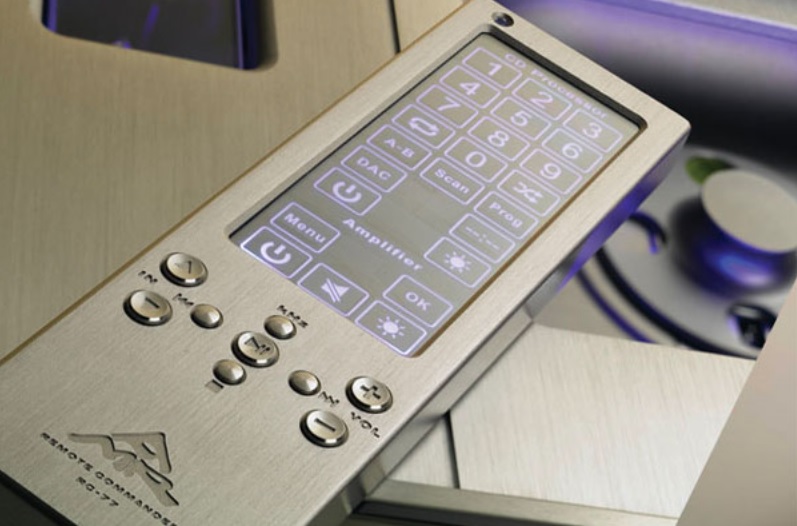
SOUND QUALITY
For the purpose of the comparison, the two players were connected, via Analysis Plus and Corfac RCA cables, to an Accuphase integrated amplifier that fed Dunlavy Athena loudspeakers. The listening room was accousticated better than normally.
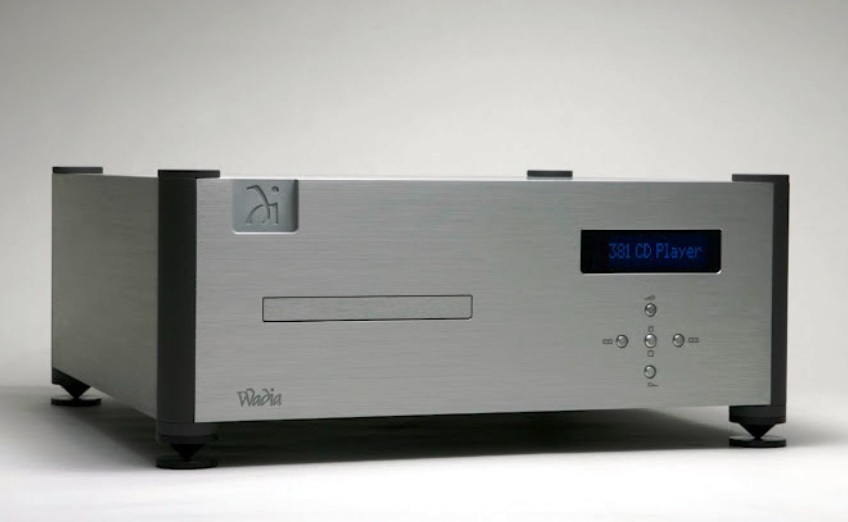
Wadia 381i: Of the three selectable digital upsampling algorithms: Algorithm A is based on a time domain interpolation algorithm and is said to produce robust sound with an excellent image and spatial effect; Algorithm B provides an airier treble reproduction; and Algorithm C falls sonically between the previous two. Wadia does well in telling about the volume difference (a decibel) between A and B/C. Such difference easily spoils a comparison. To Wadia’s credit, the algorithm settings are such that there is, relatively speaking, a pretty clear sonic difference between them (for example, the somewhat round treble reproduction of the option A). There was less difference between B and C, but purely intuitively I ended up using the option C: “correct time scale reproduction together with an airy and relaxed treble”. Sounds fine to me. Occasionally I felt that algorithm A would be the most suitable for piano music.
Overall, the sound of the 381 was clean and distortion-free. Compared to my rather basic Audiomeca & Sentec combo, the sound was pure and transparent without masking layers of any sort. Image-wise the 381 appeared to squeeze the sound in between the speakers, adding narrow depth to the sound. Since the sound did not grow vertically, it made the whole a bit small in size, a phenomenon I have encountered before with some of the top-end players. Compared to the AMR CD-77, the 381i lacked similar airiness and spaciousness, but the way in which the sound emanated from a vacuum was also attractive.
The details and nuances of the music were delivered nicely, but without a special meaning or weight of their own. The sound color/tone, at least at higher frequencies, was drier and more metallic than through the CD-77. Not aggressive, but kind of expressionless. If the CD-77 sounded more beautiful tonally, the 381 sounded more handsome. When it comes to music, the 381 firmly took care of the bass reproduction, and likewise, the varying dynamics of the music. The sound was powerful and spoke directly to the listener.
In conclusion, then, for the price of about 7 000 euros, one got a technically convincing and nicely finished CD player, as well as a neat, functional and largely impartial sound. Thanks to its effective volume control system, the sound can best be preserved with a high-quality power amplifier and neutral sounding loudspeakers.
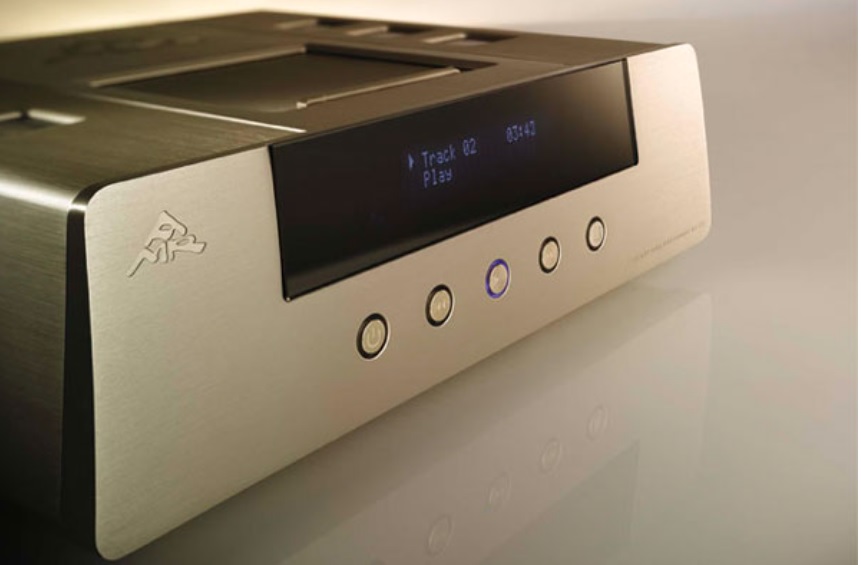
AMR CD-77: Of the six digital filters of the AMR CD-77 I preferred most the Direct Master II, which is also the default. It is said to make the HF response of the Direct Master I a tad brighter and less distant sounding. In addition, to cover different preferences in taste etc., AMR offers 2 or 4 times oversampling option, and 96 or 192 kHz upsampling, but again, I ended up using the default settings. The selection of the filter and over/upsampling is accessed via a special touch screen remote.
The sound, the way in which music sounded through the CD-77, was simply fabulous! Better or worse, I don’t remember having heard a similar sound, qualitatively speaking, from any CD player, then or now. Listening to CD-77 reminded me of why so many audiophiles prefer tube amps to their solid state counterparts. I also remember CD players with a tube output stage which I didn’t like that much, so it’s not the tube, but what to do with it, that matters.
Compared to Wadia 381i, the sound was equally pure or distortionless but still noticeably different. The details of the recordings were clearly audible, just like with the Wadia 381i, but in a more velvety manner and without any artificial pinpointing. The HF performance was of very very high class. The CD-77 also reproduced nicely reverberations and other spatial cues of the recording. The sound was spacious, airy, and organic (whatever that means). Music simply breathed well. All this made the AMR CD-77 an excellent choice for orchestral music and all music that benefits from spacious sound. There was a slight risk that the sound gets too big and wide if the volume is increased in a coarse scale. The soundstage is not quite as deep as with the Wadia 381i but the vertical and horizontal soundstaging was splendid. In this respect, the sound reminded me of best analogue FM tuners from their “golden era”, such as the amazingly good sounding McIntosh MR 77 (which I’ve also reviewed).
The tonal colour of the instruments through CD-77 were generally speaking reproduced with a superb naturalness, and the tone of the sound in general was shamelessly non-digital. The only question mark I could think of was AMR CD-77’s bass performance: despite all the precautions taken by AMR to ensure flawless bass, the acceleration speed and tightness could have been slightly better. Nevertheless the player did fine with the rhythm of the music. The way in which music swings is precise, not sloppy.
All in all, the AMR CD-77 must be one of the ablest CD players that the CD player market has ever given a life to. Don’t know how it measures technically but purely sonically it’s among the very best I have heard during my career of Hi-Fi reviewing, and definitively one of the most non-digital sounding digital player ever. 10 000 euros for a CD player was, of course, a lot ten years ago, but in this case the price felt somehow justified, given the effort made by the manufacturer.
OVERALL CONCLUSION
The winner? Well, for me it was, AMR CD-77, but I have do doubt that there are others with a different preference order who would have emphasized things differently. A more important conclusion was, firstly, and as you already knew, that CD quality is enough to reproduce music at very high level, and secondly, that two CD players, both offering a semi-perfect CD sound, can still sound more than just marginally different. Could the difference be associated with differences in DA conversion? Hard to say. My hunch was that differences in the analog output stage could have played a bigger explanatory role. The tubed power stage of the AMR CD-77 seemed particularly impressive. It’s the nature of digital sound reproduction that when compared to more this-worldly CD players, the two players did not offer performance that would have been many times better, and it’s evident that decent CD sound is available for much less money. On the other hand, CD players of this caliber have so much more than just their very high quality sound quality to influence the purchase decision.


